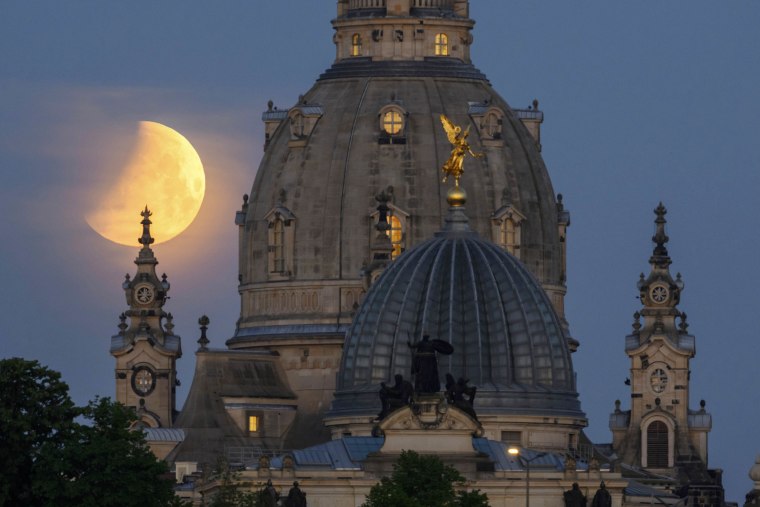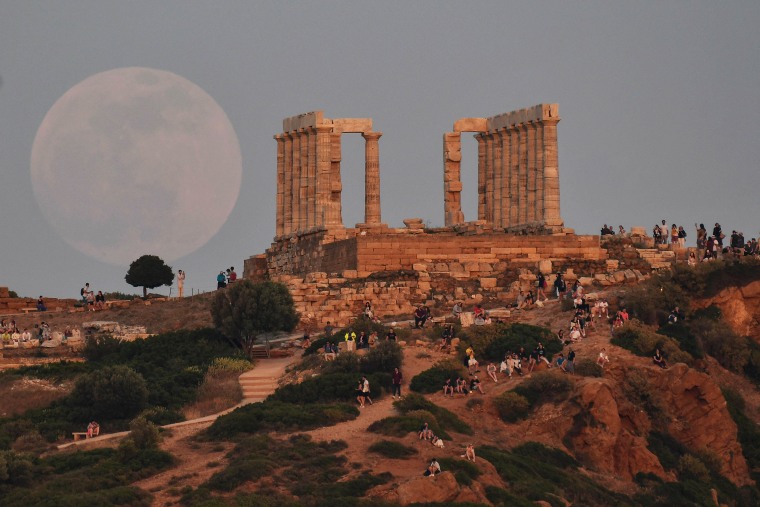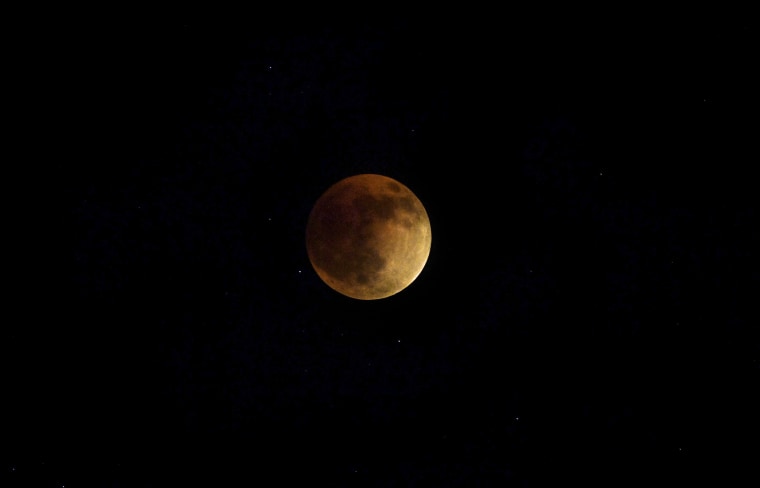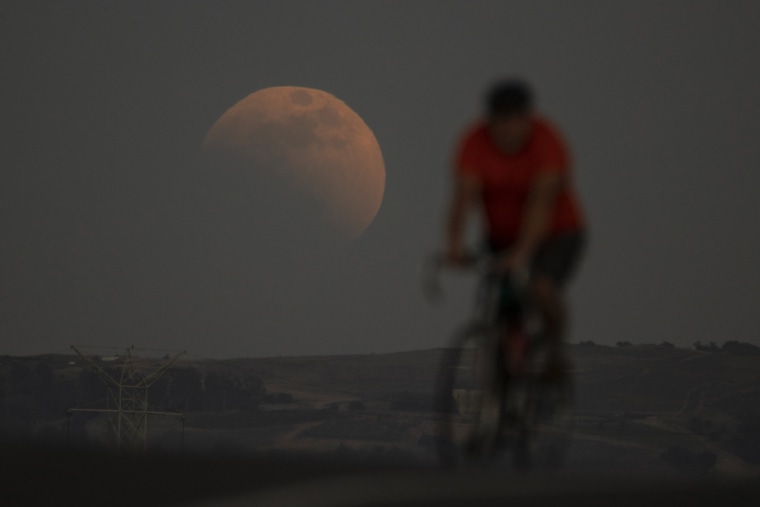A lunar eclipse early Monday produced a "blood moon," which occurs when the sun, Earth and moon align, and the moon passes through the darkest part of Earth’s shadow.
The event was best seen in the eastern U.S., South America, Africa and Western Europe. Totality, or the moment when the moon was fully obscured, occurred around midnight.

The red hue appears because the only sunlight reaching the moon passes through Earth’s atmosphere, according to NASA.
“The more dust or clouds in Earth’s atmosphere during the eclipse, the redder the Moon will appear,” the space agency wrote on its website. “It’s as if all the world’s sunrises and sunsets are projected onto the Moon.”
The May full moon is sometimes known as the “flower moon” in traditional folklore because it’s typically at a time of year when spring flowers emerge.
NASA featured livestreams of the eclipse from locations across the globe, including in Alabama, Italy, Spain and New York. Scientists also answered questions on the live feed. From beginning to end, the eclipse lasted just over five hours.

Social media users enthusiastically posted photos and videos of the moon in their area.
“I just look in wonder on what TREAT the human race had to see,” wrote Margaret Loyd on Twitter.



The next lunar eclipse will occur in November, according to NASA, and be visible in the western U.S., eastern parts of Asia and Japan.
An almost total lunar eclipse occurred in November 2021 that was visible in North America, and parts of South America, Australia and northeastern Asia.